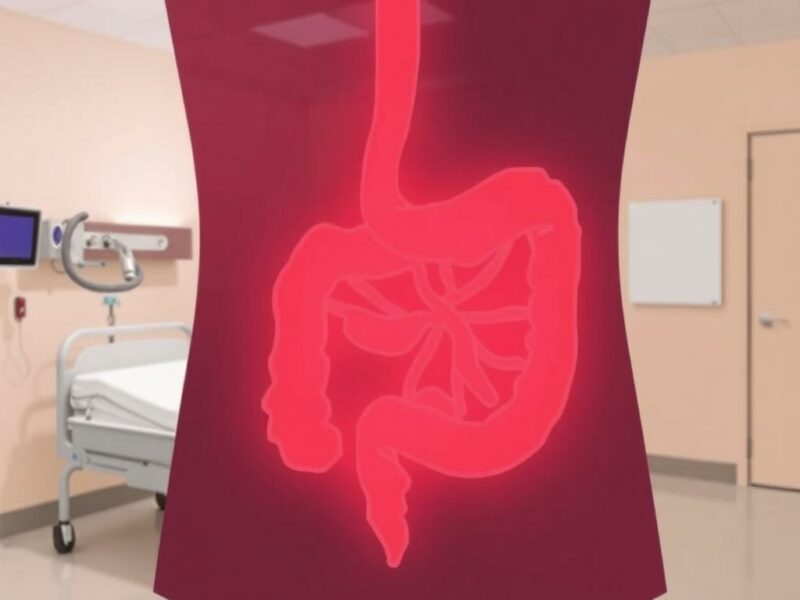Appendicitis is one of those medical emergencies that can creep up quickly and demand immediate attention. Knowing when to go to the ER for appendicitis can literally save your life or at least prevent serious complications. Despite being a familiar condition to many, appendicitis often masquerades as other common stomach ailments, making it tricky to identify at first. In this article, we will break down the key symptoms to watch for, the stages of appendicitis, and why timing is so crucial.
Understanding the early warning signs of appendicitis can help you avoid delays in treatment. Many people wonder if their stomach pain is just indigestion, gas, or something more serious. Unfortunately, ignoring the symptoms or hoping they’ll go away without medical care can lead to a burst appendix and a dangerous infection. So, how do you tell if you need emergency care? When should you go to the ER for appendicitis? Let’s explore these questions step by step.
What Is Appendicitis and Why Is It Serious?
Appendicitis occurs when the appendix, a small tube-shaped pouch attached to the large intestine, becomes inflamed and swollen. This inflammation usually happens because the appendix gets blocked by stool, a foreign body, or rarely, tumors. When this happens, bacteria multiply inside the appendix, leading to infection. If not treated promptly, the appendix can rupture (burst), spreading infection throughout the abdomen, causing a life-threatening condition known as peritonitis.
Identifying appendicitis early means a higher chance of a simple surgery and quick recovery. Delaying treatment increases pain, infection risk, and longer hospital stays. Many people don’t realize how commonly appendicitis occurs: it affects roughly 7% of the population at some point in life. Knowing when to go to the ER for appendicitis is the first step in avoiding serious complications.
Common Causes and Risk Factors for Appendicitis
Understanding what might trigger appendicitis can help you be more alert to your symptoms. Some known risk factors include:
- Age: Most common between 10 and 30 years old.
- Family history: If someone in your family had appendicitis, your risk may be higher.
- Infections: A recent stomach or intestinal infection can increase inflammation.
- Obstruction: Blockage inside the appendix caused by fecal matter, swelling, or parasites.
While anyone can get appendicitis, young adults and teenagers tend to be most at risk, but it can affect people of all ages. Recognizing early symptoms matters more than risk level because appendicitis requires quick medical intervention for everyone.
Recognizing the Symptoms: When Is It Appendicitis?
Appendicitis symptoms typically follow a pattern but can vary from person to person. The first signs can be subtle or mistaken for other conditions like gastroenteritis or urinary tract infections. Let’s look closely at the usual symptoms to help you know when to go to the ER for appendicitis.
Early Symptoms
Initially, you may notice:
- Mild abdominal discomfort: This usually starts around the belly button and may feel like general stomach pain or cramping.
- Loss of appetite: Feeling suddenly disinterested in food is common.
- Nausea or vomiting: This may follow the pain onset.
- Low-grade fever: A slight temperature elevation may appear.
These early symptoms are often ignored or mistaken for flu, indigestion, or stress. Yet, this is when you need to start paying attention, especially if the pain moves or worsens.
Progression of Symptoms
Within hours, the symptoms begin to intensify and become more localized:
- Severe pain in the lower right abdomen: This is the hallmark sign of appendicitis. The pain typically migrates from the belly button area to the bottom right part of your belly.
- Increased fever: Your body temperature may rise higher than 100.4°F (38°C).
- Abdominal swelling: The abdomen may feel tender and bloated.
- Difficulty moving or walking: The pain can be sharp enough to make walking or coughing painful.
Less Common but Serious Symptoms
Some people may have atypical appendicitis symptoms, including:
- Pain in the back or pelvic area instead of the lower right abdomen.
- Diarrhea or constipation.
- Inability to pass gas.
Children, pregnant women, and older adults often experience unusual symptoms. For example, appendicitis during pregnancy may cause pain higher up in the abdomen due to the position of the uterus. This variability can make diagnosis tricky and is a key reason to seek professional evaluation rather than guessing at home.
When to Go to the ER for Appendicitis: Key Warning Signs
So, how do you know it’s time to pack up and head to the emergency room? Given that appendicitis can progress rapidly, immediate medical attention is essential once certain symptoms emerge.
Top Reasons to Seek Emergency Care
| Warning Sign | Why It’s Serious | What You Should Do |
|---|---|---|
| Severe abdominal pain, especially in lower right | Indicates inflammation of the appendix worsening | Go to the ER immediately |
| Persistent vomiting preventing fluids intake | Risk of dehydration and worsening condition | Seek emergency medical help |
| High fever (above 101°F or 38.5°C) | Indicates infection possibly spreading | Go to the ER without delay |
| Inability to pass gas or severe abdominal swelling | May signal bowel obstruction or perforation | Immediate emergency evaluation required |
| Sudden relief in pain followed by increased pain later | May mean appendix has ruptured | Call 911 or go to ER immediately |
Urgent Symptoms in Specific Populations
Certain groups should go to the ER for appendicitis symptoms without hesitation:
- Children: Especially under 5 years, because symptoms can be subtle but deterioration rapid.
- Pregnant women: Appendicitis can be harder to diagnose but equally dangerous.
- Older adults: May have blunted symptoms and delayed diagnosis increases risk.
- People with compromised immune systems: Quick treatment minimizes infection risks.
If you or someone you know fits into these categories and has suspicious symptoms, don’t wait or try home remedies — head to the ER immediately.
What Happens at the Emergency Room?

When you arrive at the ER with suspected appendicitis, a doctor will act quickly. Time is of the essence in diagnosing and treating appendicitis to avoid complications. Here is a general overview of the ER process:
Medical Evaluation
The medical team will conduct:
- Physical examination: Checking for tenderness, rebound pain, and abdominal rigidity.
- Vital signs assessment: Measuring fever, blood pressure, heart rate, and breathing.
- Medical history review: Questions about symptom onset, intensity, and any other illnesses.
Diagnostic Tests
To confirm appendicitis, doctors often order:
- Blood tests: Looking for elevated white blood cell count indicating infection.
- Urinalysis: To rule out urinary tract infections or kidney stones.
- Imaging studies: Ultrasound or CT scans to visualize the appendix and detect inflammation.
Treatment Options
If appendicitis is confirmed, surgery to remove the appendix (appendectomy) is the most common treatment. This can be done via:
- Laparoscopic surgery: Minimally invasive with quicker recovery.
- Open surgery: May be necessary if the appendix has ruptured or infection has spread.
In some rare cases, antibiotics might be used first if surgery isn’t immediately possible. But surgery remains the definitive treatment to prevent recurrence or complications.
Common Questions About Going to the ER for Appendicitis
It’s normal to have questions about when and why to seek emergency care for appendicitis. Here are some frequently asked questions that might ease your mind.
Is all abdominal pain a reason to go to the ER?
No, not all stomach pain means appendicitis. Many mild stomach aches resolve on their own. However, if the pain worsens over several hours, especially in the lower right abdomen, or if you have other symptoms like fever, vomiting, or swelling, going to the ER is smart.
Can I wait to see if symptoms improve at home?
It’s risky to delay. Appendicitis can worsen rapidly, and the worst outcome — rupture — often happens within 48 to 72 hours of symptom onset. If you suspect appendicitis, getting evaluated quickly is safer.
What if I have a medical condition that makes surgery risky?
Doctors will consider your overall health and may recommend alternative treatments or take special precautions. The key is timely diagnosis before complications arise.
Are there any apps or tools to self-diagnose appendicitis?
While some symptom checkers exist, none replace a thorough medical evaluation. Always err on the side of caution and go to the ER if appendicitis is suspected.
How to Prevent Appendicitis or Spot It Early

Unfortunately, there is no guaranteed way to prevent appendicitis since the cause is often obstruction or infection that can occur randomly. However, maintaining good digestive health can help reduce risks:
- Eat a high-fiber diet rich in fruits, vegetables, and whole grains
- Stay hydrated to promote healthy bowel movements
- Practice good hygiene to reduce infections
- See a healthcare provider for persistent or unusual abdominal symptoms
Most importantly, learning to spot the early warning signs of appendicitis and understanding when to go to the ER is your best defense.
Wrap-Up: Key Takeaways on When to Go to the ER for Appendicitis

Appendicitis can start like a minor stomach upset but quickly become a serious medical emergency. The key signs — severe pain near the lower right abdomen, fever, vomiting, swelling, and inability to pass gas — should never be ignored. Certain groups, like children and pregnant women, may show atypical symptoms, so extra care is advised.
Heading to the ER at the right time ensures you receive prompt diagnosis, appropriate treatment, and avoid severe complications like a ruptured appendix or widespread infection. Don’t hesitate or try home remedies; appendicitis is not something to take lightly. If you or a loved one experiences symptoms consistent with appendicitis, immediate medical evaluation is critical.
Conclusion
Knowing when to go to the ER for appendicitis can be the difference between a straightforward recovery and a life-threatening emergency. Pay close attention to your body’s signals, especially abdominal pain that intensifies and localizes to the lower right side, accompanied by fever or vomiting. Don’t delay seeking medical care — emergency rooms are equipped to provide the quick evaluation and treatment you need to prevent serious complications. Remember, when in doubt, it’s always better to get checked out because appendicitis symptoms can evolve rapidly. Your health and safety depend on recognizing the signs early and acting fast.



